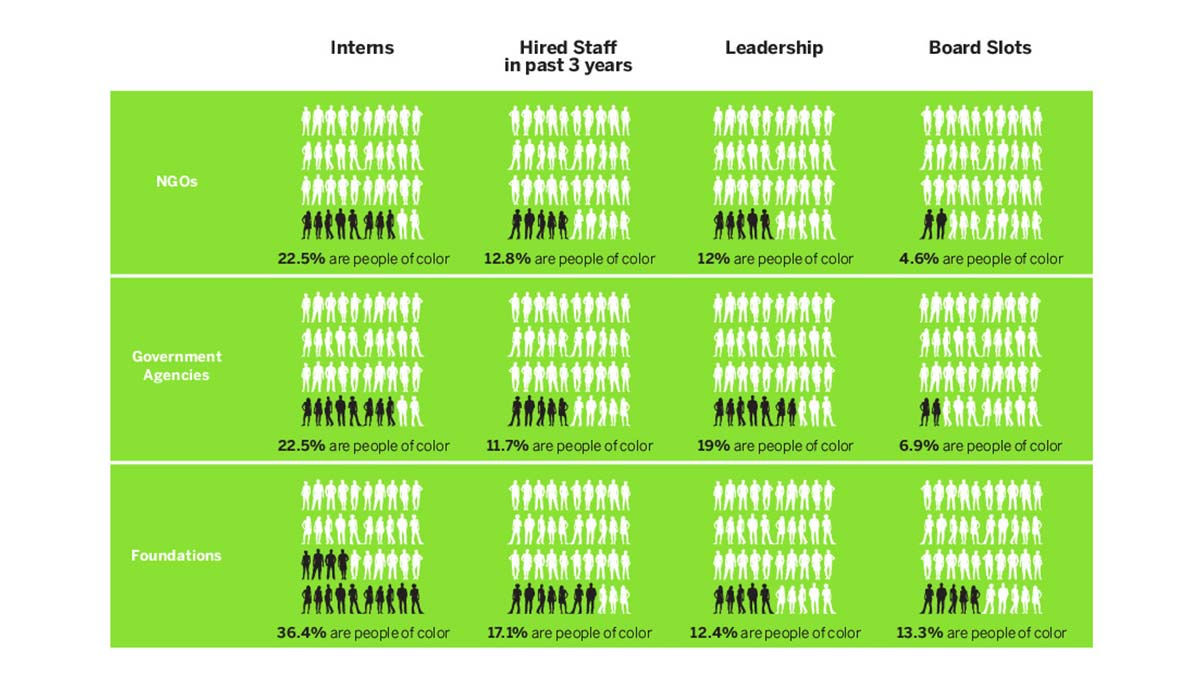Climate change disproportionally damages low-income communities and communities of color. Although higher percentages of Americans of color, particularly African Americans, support green climate actions than White Americans, the majority of positions in environmental organizations are held by White individuals, usually White men.
Although environmental organizations have strived to become more diverse over the past five decades, their efforts have been primarily successful targeting White women. They still have a long way to go to diversify across ethnicities.
People of color comprise more than a quarter of the US population (around 38%). Yet, the percentage of paid positions held in environmental institutions by people of color is low. A Green 2.0 report, conducted by Dorceta Taylor from the University of Washington, reviewed diversity among environmental organizations, and the state of current initiatives in place to increase racial diversity in the workplace.
As seen in the chart above, people of color comprise a little over one third of all intern positions across three categories of environmental institutions (NGOs, Government Agencies, and Environmental Foundations). The percentage of ethnic minorities declines by more than half as volunteers move into paid positions; minorities comprise no more than one fifth of all hired staff and leadership positions. Environmental foundations have the highest number of people color on their boards, with the lowest number of board positions reported among environmental NGOs at less than 5%. African American Women are the most underrepresented.
Dorecta Taylor reviews the whiteness of the environmental movement, explaining that since the 1960s, ethnic minorities have been shunned, misunderstood, and marginalized from joining. It took several decades of activists, urging collaboration and drawing parallels across social justice and environmental issues, before the movement opened up to incorporate issues pertaining to poverty and racism. It wasn’t until 1990, when organizations such as the Wilderness Society and the Sierra Club were accused of racist hiring practices, did they publicly step forward to admit that they “had done a miserable job of reaching out to minorities.” Yet workplace diversity is still an ongoing struggle.
Databyte via The Challenge: Report Examines Why Decades of Promises to Diversify are Falling Short in the Mainstream Environmental Movement. Green 2.0.













